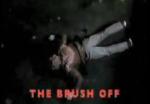AustLit

Latest Issues
AbstractHistoryArchive Description
'When Agnelli is demoted to Minister of Arts and Water, he decides to earn brownie points by raising funds for the next election campaign. Murray is on the case, meeting with philanthropists and arts connoisseurs. This is where the trouble begins.'
Source: Screen Australia. (Sighted: 5/4/2013)
Publication Details of Only Known VersionEarliest 2 Known Versions of
Works about this Work
-
Generic Outlier : John Clarke and ‘the shabby suit crime comedy’
2019
single work
criticism
— Appears in: Comedy Studies , vol. 10 no. 1 2019; (p. 88-101)'From 1999 to 2005, Australian cinema produced several crime comedies beginning with Gregor Jordan’s Two Hands (1999) which served as a ‘prototype’ (Grindon 2012) for the variations that followed, including two farcical satires adapted for the screen by John Clarke. Clarke adapted for television two crime novels by Australian author Shane Maloney, Stiff (2004) and The Brush-Off (Neil, 2004). For Stiff, Clarke directed as well as wrote the screenplay. Production for both was by Huntaway films, a company owned by him, The Brush-Off director, Sam Neill, and co-producer, Jay Cassells. While these two films do not match the famed Clarke and Dawe sketches (Australian Broadcasting Company TV) for satirical bite and artistry, they are an interesting subset of this crime comedy ‘cluster’ (Grindon 2012) within what might be called ‘the shabby suit crime comedy’ genre. Clarke’s crumpled protagonist stands apart as an educated little man up against the forces of political corruption and vice. It is argued here that the films identified from this short time-span share thematic concerns and iconography as well as neglectful male tailoring: the group of Australian crime comedies possesses similar syntactic and semantic generic qualities (Altman, 1984). This article discusses the outlier status of Clarke’s pieces within that group as farcical satires in a political rather than criminal milieu, as well as their distinctive techniques and artistic success.'
Source: Abstract.
-
Fun and Folly
2005
single work
review
— Appears in: Limelight , December 2005; (p. 43)
— Review of Stiff 2004 single work film/TV ; The Brush-Off 2004 single work film/TV
-
Fun and Folly
2005
single work
review
— Appears in: Limelight , December 2005; (p. 43)
— Review of Stiff 2004 single work film/TV ; The Brush-Off 2004 single work film/TV -
Generic Outlier : John Clarke and ‘the shabby suit crime comedy’
2019
single work
criticism
— Appears in: Comedy Studies , vol. 10 no. 1 2019; (p. 88-101)'From 1999 to 2005, Australian cinema produced several crime comedies beginning with Gregor Jordan’s Two Hands (1999) which served as a ‘prototype’ (Grindon 2012) for the variations that followed, including two farcical satires adapted for the screen by John Clarke. Clarke adapted for television two crime novels by Australian author Shane Maloney, Stiff (2004) and The Brush-Off (Neil, 2004). For Stiff, Clarke directed as well as wrote the screenplay. Production for both was by Huntaway films, a company owned by him, The Brush-Off director, Sam Neill, and co-producer, Jay Cassells. While these two films do not match the famed Clarke and Dawe sketches (Australian Broadcasting Company TV) for satirical bite and artistry, they are an interesting subset of this crime comedy ‘cluster’ (Grindon 2012) within what might be called ‘the shabby suit crime comedy’ genre. Clarke’s crumpled protagonist stands apart as an educated little man up against the forces of political corruption and vice. It is argued here that the films identified from this short time-span share thematic concerns and iconography as well as neglectful male tailoring: the group of Australian crime comedies possesses similar syntactic and semantic generic qualities (Altman, 1984). This article discusses the outlier status of Clarke’s pieces within that group as farcical satires in a political rather than criminal milieu, as well as their distinctive techniques and artistic success.'
Source: Abstract.
Awards
- 2005 nominated Logie Awards — Most Outstanding Miniseries or Telemovie
- 2004 nominated Australian Film Institute Awards — Best Telefeature or Mini-Series
- 2004 nominated Australian Film Institute Awards — Best Screenplay in Television
- Melbourne, Victoria,



